BUILDING THE FOUNDATIONS OF A WORLD CLASS DESIGN TEAM
Driving adoption of user centered design across an enterprise
I joined Bank of America as SVP of Design to inspire a team to push boundaries and deliver the promise of one bank, one platform.
I was part of a new leadership team on a mission to change the way digital products were planned and delivered, infusing a growth mindset within the regulatory and risk adverse culture of the bank. Before we could think and make differently, a foundational investment in shared vision and practice definition was required.
Project role:
Program architect and lead in collaboration with two SVP partners
Methodology, workshop and training lead
X-product and business partnership builder
Timing:
One month planning and building
Three months training
Ongoing application and improvement
John Kotter’s 8 step change model
Design at BofA was at an early stage of transformation, in need of a strategic vision and alignment among the design team and partners to move user centered design and efficient ideation to launch forward.
Human centered design was at the core of every BofA design team members intent but lack of shared methodology, tools and shared practice made it cumbersome and prohibitive.
“We simply don’t have time to get into deeper research or variation… we know we need to”
“I’m measured on delivery, not deliberation”
The Lens Framework
Two shifts were required:
Recognition from the top reinforcing the adoption of a human centered mindset
A resource toolkit supporting a new culture of learning
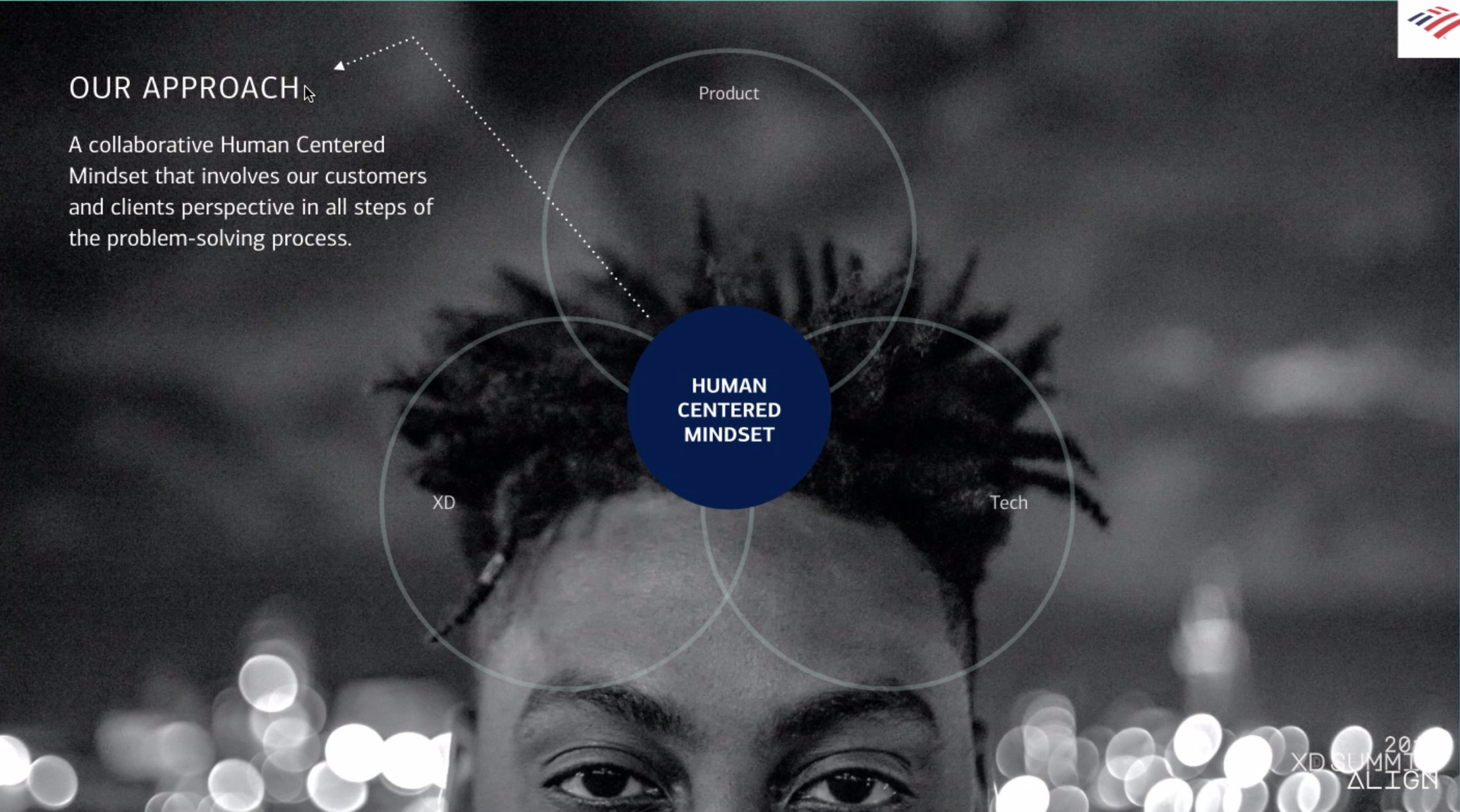
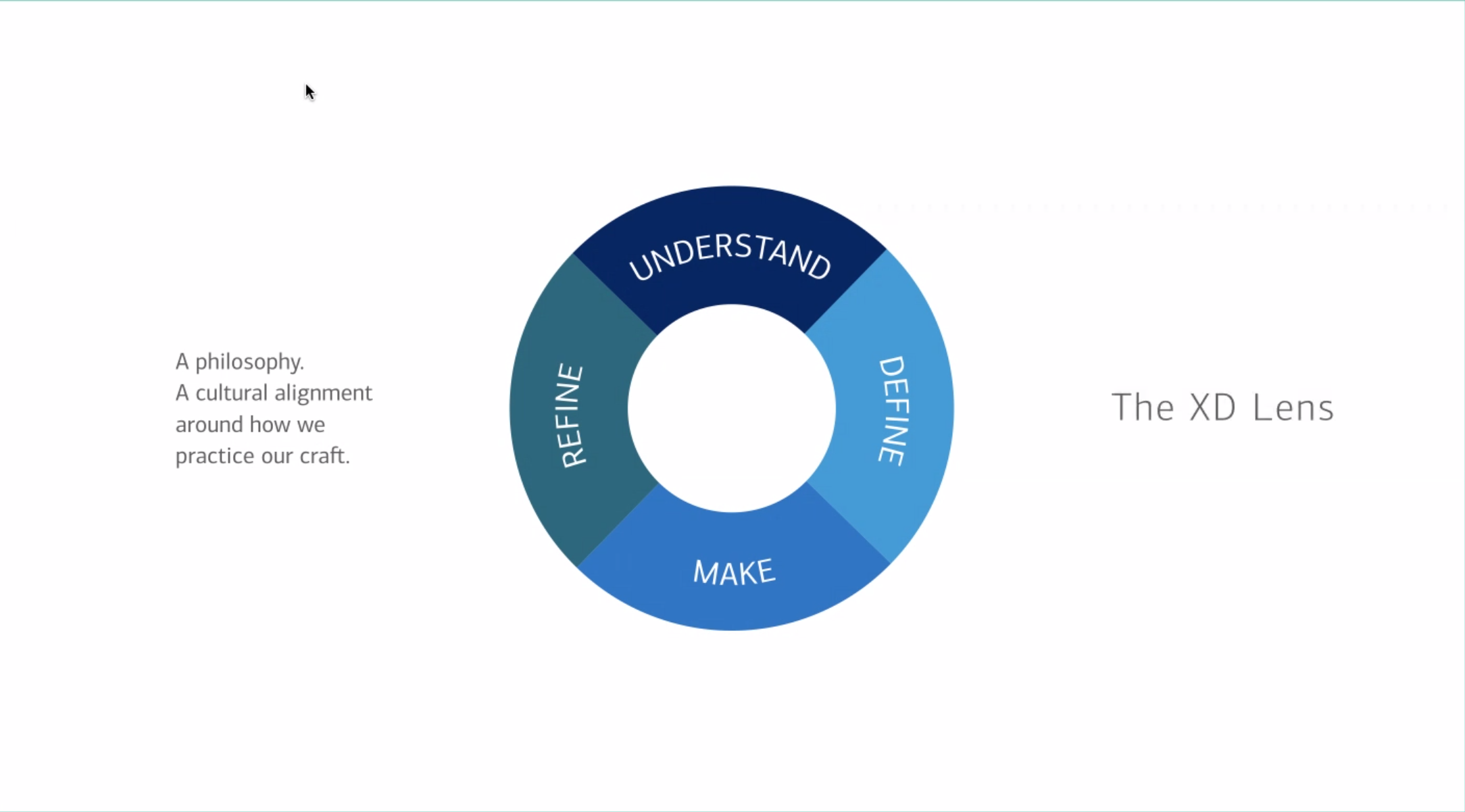
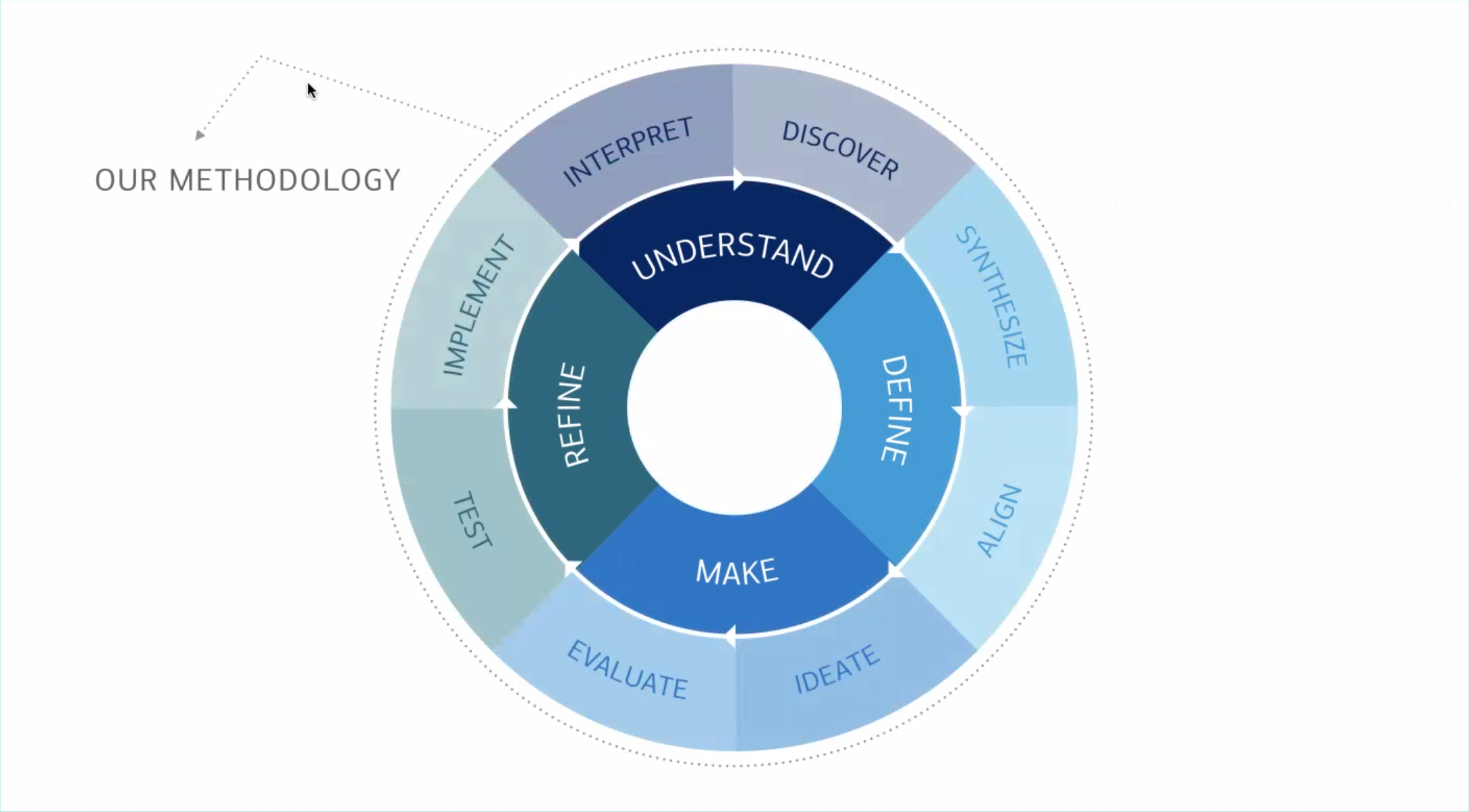
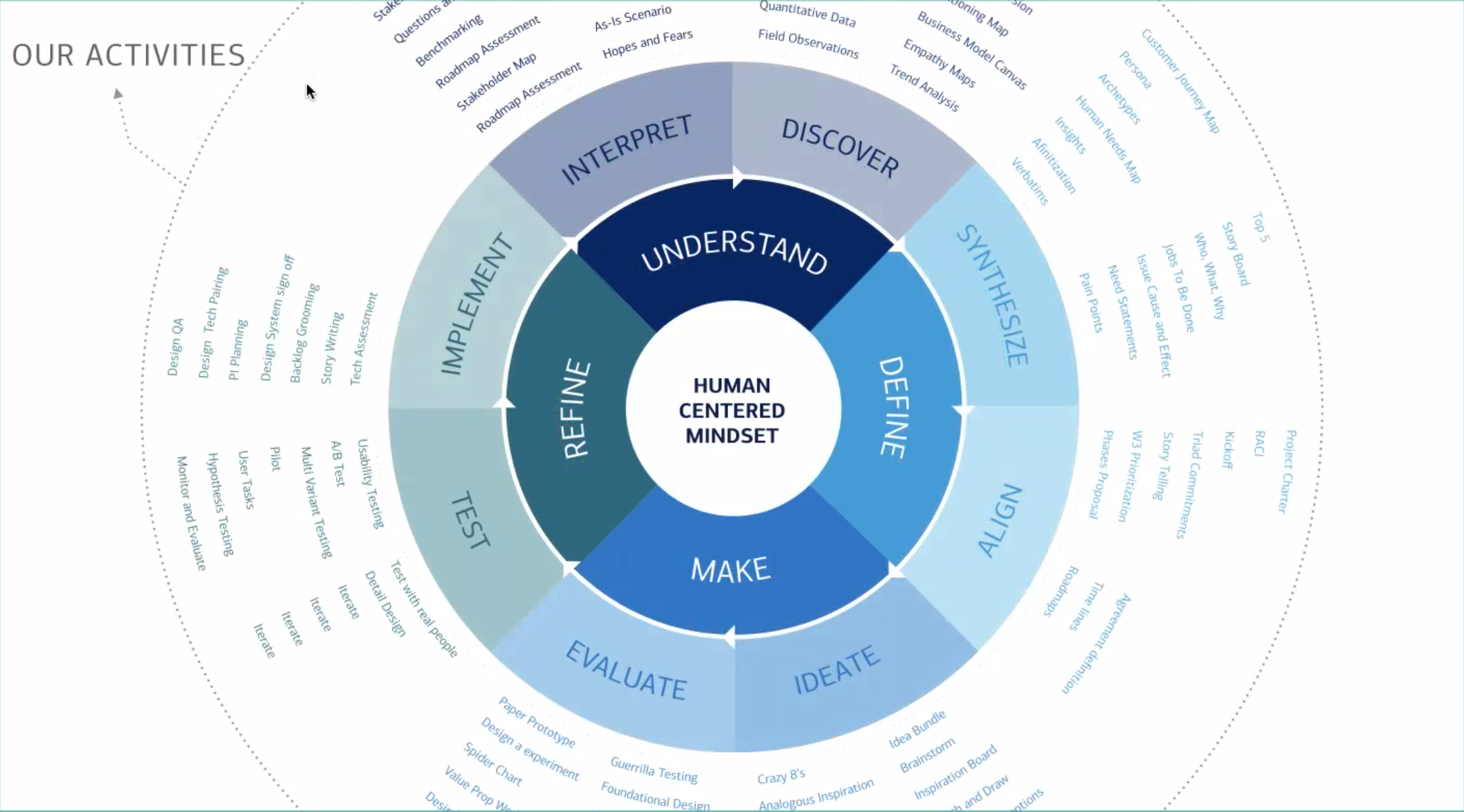
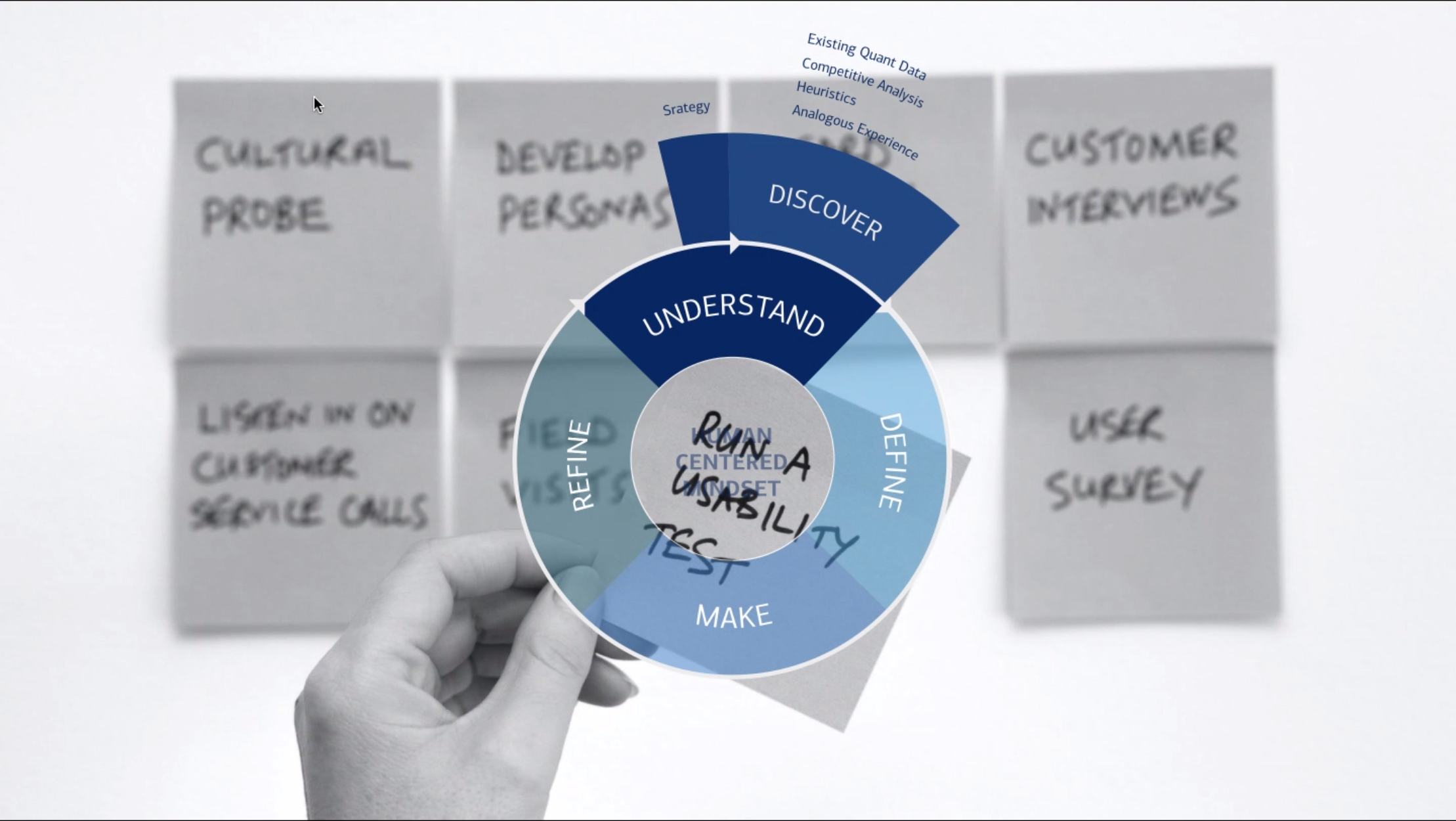
Slides from a presentation out to the broader design team from my collaborator and partner - Thank you Jarrod Joplin! The Lens sticker soon became ubiquitous across the BofA product teams
Three weeks into my new role, I co-drafted the vision of the “Lens Framework,” with my leadership partners. We conducted working sessions with team members to understand their process and analyzed the successful models of frog, Ideo and IBM to blend known strengths with something unique to our challenges.
I co-presented the framework at an annual Summit with success measured in the number of participants who came forward to join in the hard work ahead to train and align our team.
After the Summit, I lead a volunteer team in the crafting of a learning workshop where teams would learn how to take a product challenge through the phases of Understand, Define, Make and Refine.
Participants worked off of a carefully time-based set of exercises engaging with new tools and templates including:
Refining the brief
Understanding the stakeholder matrix
Hypothesis formation
Insight creation
Stakeholder buy-in
User input and secondary research
Today, every product team aligns their program plan, reviews and hand-offs leverage the common language, tools and phases of the Lens. Design leadership instilled the expectation of Human Centered work and the team collectively built, adopted and strengthened the tools and methods to deliver.
RESULTS
100% team adoption on the Lens practice and use of the growing online resource tool-kit
Reduction in design team attrition and increase in E-Sat attributed to shared sense of purpose and leadership support
Adoption of phase and process language across UX, Product, Eng and executive leadership
GRATITUDE
My role, scope and team size rapidly expanded shortly after completing the Lens project. Without this foundation and establishment of trust, I would not have been able to deliver the level of leadership required.
- Thank you Rachel Kobetz for believing and making room for this investment!





